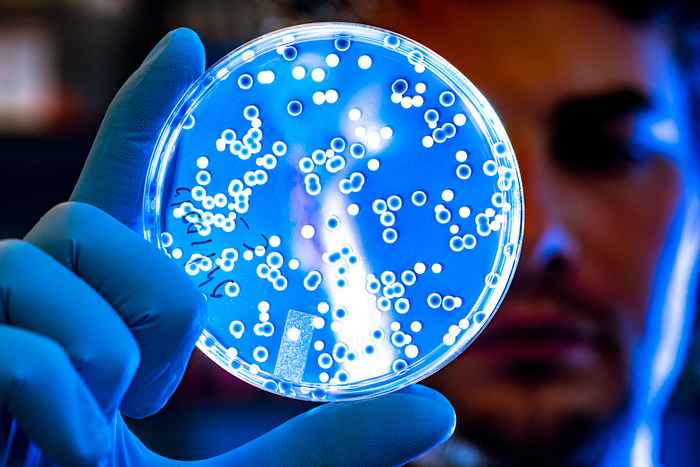Drug-resistant fungus is on the rise worldwide
13 December 2023

From superficial eczema to fatal bloodstream infections – each year, over one billion people contract a fungal infection, and 1.6 million people die as a result. According to De Jong, whose research mainly focuses on disease-causing Candida fungi, there has been ‘a dramatic increase over a period of ten years’. ‘We are seeing a shift away from infections caused by Candida species that are easily treatable towards drug-resistant species that pose a threat, with Candida auris being one of the most notorious of these infectious fungi species.’
Mistery
The origins of the fungus as still shrouded in mystery. De Jong is looking for clues in the DNA and behaviour of Candida auris. ‘We suspect that seawater plays a key role’, he says. ‘Because this fungus has a very high tolerance for salt, which is a substance many fungi cannot cope with. The sea could be a plausible route for the global spread of Candida auris; it may have been spread across the globe by the currents.’
Alarming
According to De Jong, its spread is alarming. ‘The fungus causes an exceptionally high death rate among risk groups and cannot be properly treated. It’s a robust and highly adaptable fungus. For example, in addition to its high tolerance for salt, it can also easily survive relatively high temperatures and commonly used disinfectants.’
Nearly all infections with the fungus are contracted in hospitals. ‘Operations present an opportunity for the fungus to enter the body.’ It is unknown where the patients first came in contact with the fungus. ‘Hospitals are unlikely to be the original source; patients probably already carried the fungus with them for some time.’
Explanations
However, there are explanations for its fast spread. ‘It is mainly due to the huge medical advances made in recent decades. There is now a whole group of people who continue to live with diseases from which people used to die more quickly. The downside of that is that this group often has a severely weakened immune system, which makes them much more vulnerable to infections. According to De Jong, there is therefore an urgent need to work on being able to detect and fight the fungus early on. ‘My research is mapping the unique characteristics of this Candida species. We are currently seeing many misdiagnoses in hospitals, leading to incorrect or belated treatment of fungal infections. To be able to reduce that, we first need to identify and understand the fungus better.'
Promotion details
Auke de Jong will defend the dissertation 'Fungal Pathogens Exposed. Novel insights into Candida auris and emerging relatives of the Candida haemulonii species complex' on 22 december in the Agnietenkapel in Amsterdam.